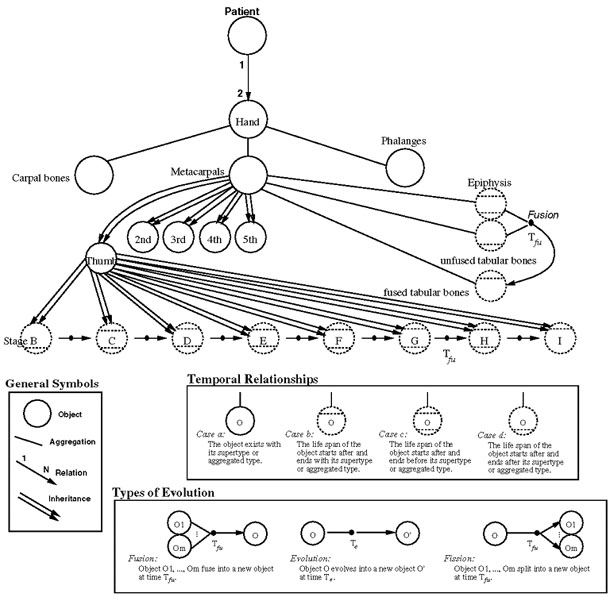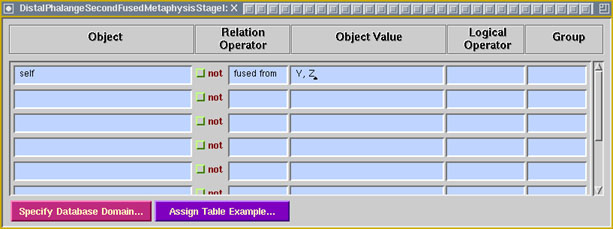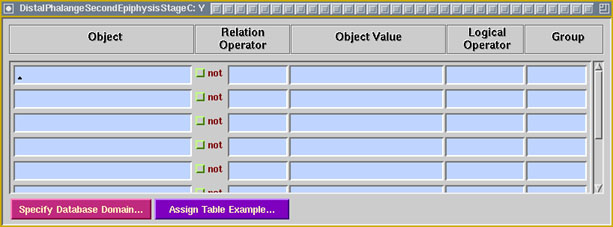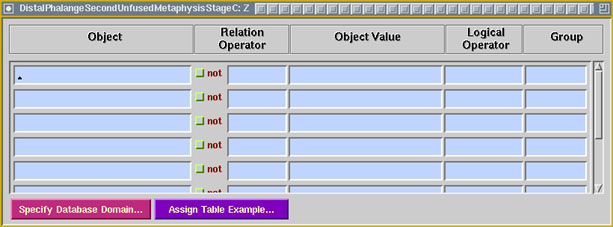Many medical images possess temporal and evolutionary semantics: bones and
other medical objects grow, fuse, and divide over time. Our temporal
evolutionary data model (TEDM) attempts to capture these changes into a
form that can be modeled, stored, displayed, and queried.
Query 2
Retrieve cases where a Stage I metaphysis of the second distal phalange
has fused from a Stage C epiphysis ad metaphysis.
Query 2 makes use of the hand data model that we developed, shown below
(click on the figure for an expanded view).

The screenshots below illustrate Query 2 as expressed in KMeD PICQUERY+.
Because Query 2 refers to three distinct objects (a Stage I metaphysis, a
Stage C epiphysis, and a Stage C metaphysis), three tables are required,
one for each object. Note that the only predicates that are necessary
are entered into the Stage I metaphysis's table, which shows how the
Stage I metaphysis is related to the Stage C epiphysis and metaphysis.



The results of this query are evolutionary chains from the original
objects to their final objects, showing any fusion, fission, or
evolutionary changes. Such an evolutionary chain is shown below (a larger
image is available by clicking on the one below).

|
